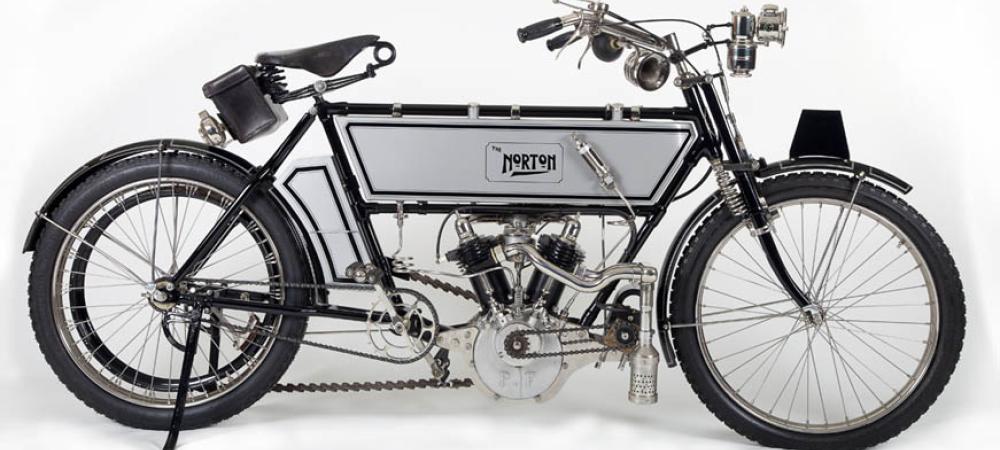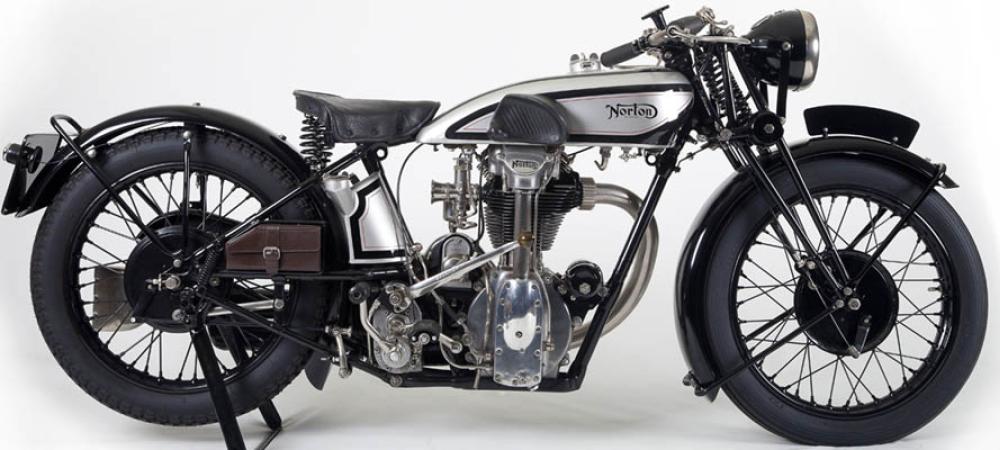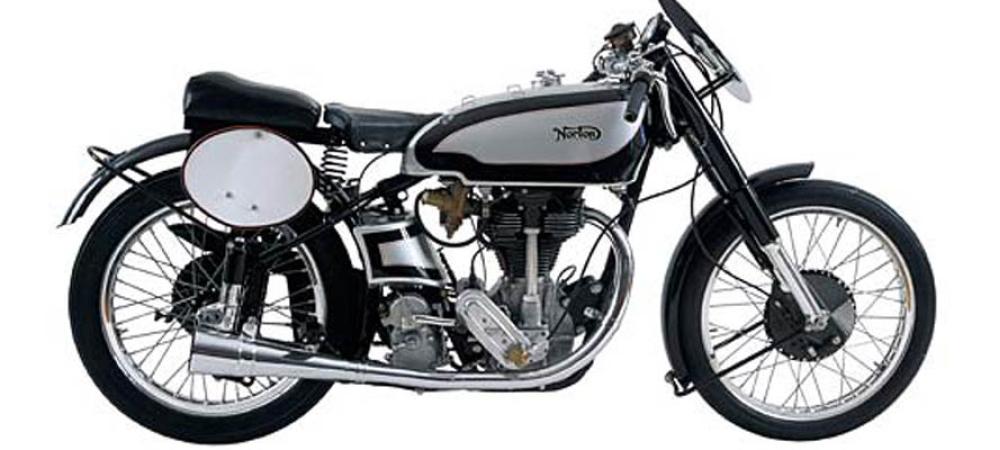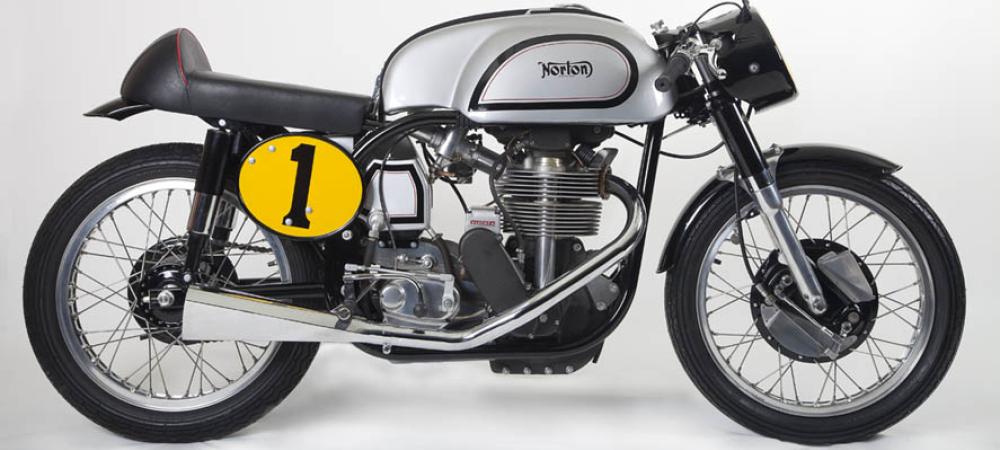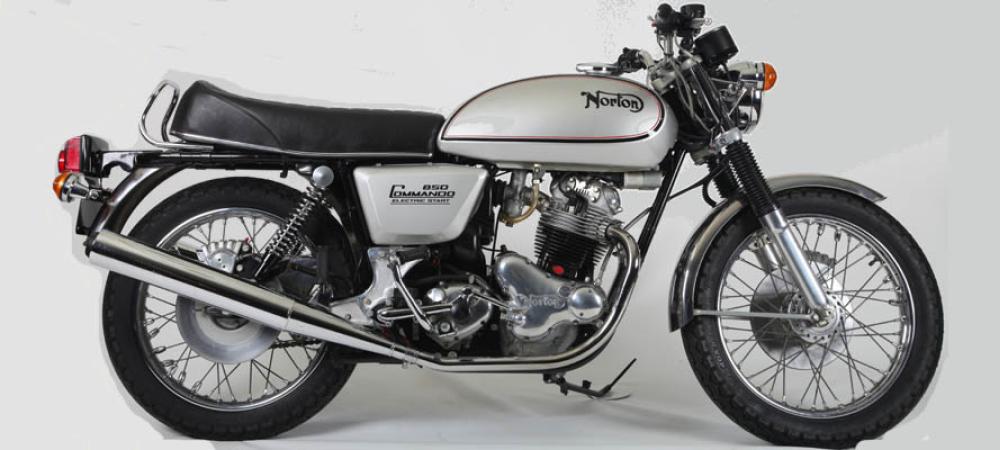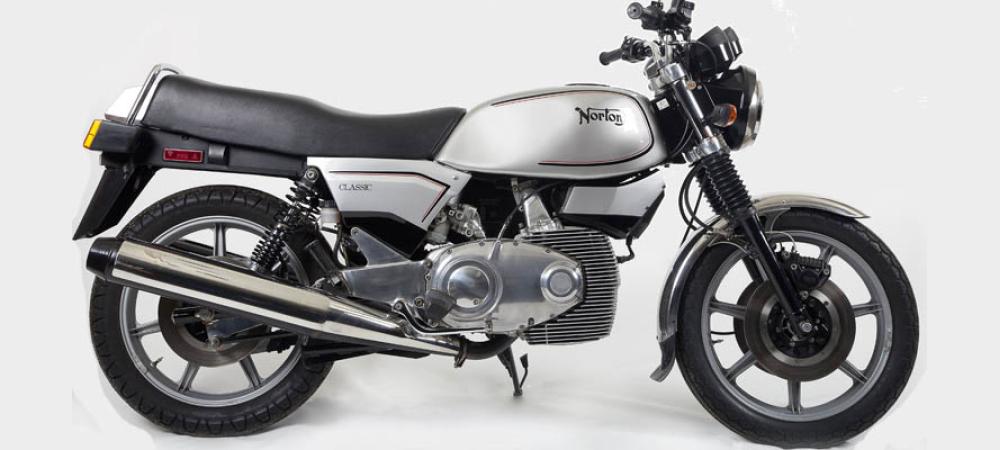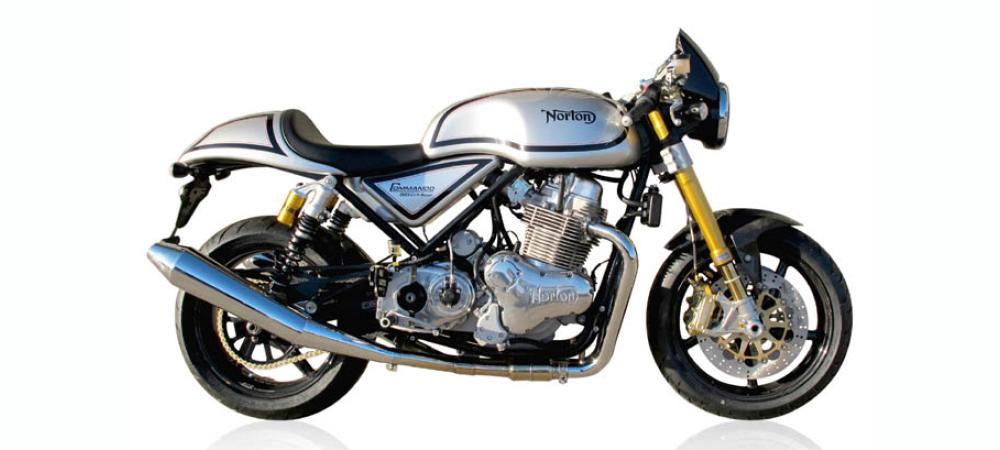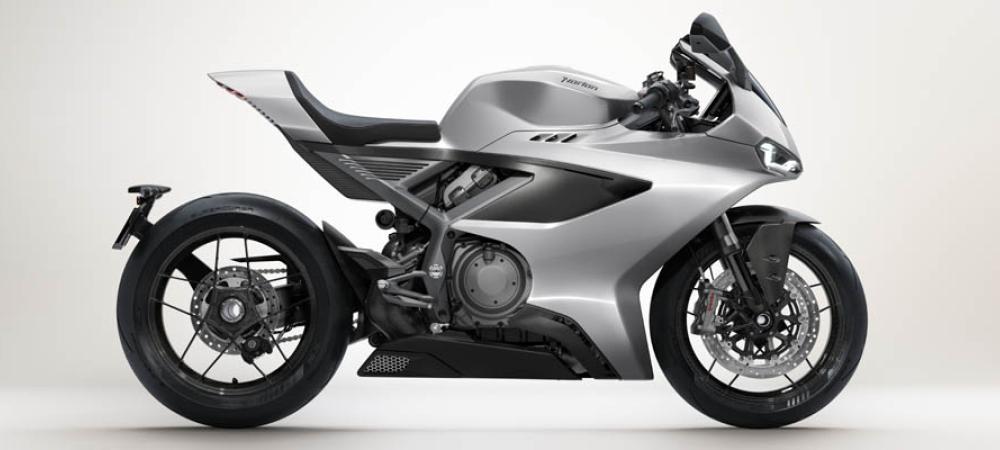NORTON TRIALS HISTORY 1926 to 1939
Norton's involvement with trials of the early 20s had been fairly minimal. Two models were offered with a Colonial specification of increased ground clearance, wide gear ratios and more substantial tyres; the Big 4 and 17C. Standard Nortons had enjoyed some success in early trials, notably Phil Pike of Plymouth using his own 588 sidecar outfit was a member of the winning British Trophy Team in the 1926 International Six Days Trial. Phil had been involved with Norton's successful Maude's Trophy attempts. Stanley Woods having joined the race team was also appointed the sales rep for northern England. His success in Irish Trials was well known, so no doubt a challenge was made and Stanley rode a Model 18 in the 1926 Scott Trial. It was not until 1927 that Norton supported a rider in Open National Trials. Factory boss Bill Mansell's teenage son Dennis had commenced competing with a sidecar outfit and it was probably this involvement that lead to rising star Graham Goodman, a Birmingham pin manufacturer, being provided with a Model 18 factory outfit. Major success eluded both riders throughout 1927, but at the beginning of 1928, Dennis using the newly introduced overhead camshaft Model CS1 made Best Performance in the prestigious Victory Trial, repeating this success in the Cambrian Trial and followed up with Best Sidecar in the Bemrose and Wye Valley Traders events. Graham changed back to riding solo with somewhat mixed fortunes, until the autumn of 1928, when he and Dennis were provided with the new 350 ohc machines (almost certainly ex-TT bikes). First time out Dennis made Best Sidecar Performance in the West of England Trial and a few weeks later Graham made second Best Performance on Time in the demanding Scott Trial. July 1928 saw Jimmy Simpson leaving the AJS Company to join the Norton Team. Jimmy was another accomplished trials rider and teamed with Graham and Dennis gave Norton a formidable trials trio.The year 1929 saw the team make a major impact in Open Trials, Graham made five Best Performances and Dennis two, as well as winning the sidecar class of the first ever British Experts Trial. Graham could not repeat the feat in the solo class, he was the organiser of the event! Five prestigious Team Awards were also gained and it could be said that in 1929 the trials team mostly campaigning the 350 CJ, which had performed so dismally in the 1928 and 1929 TTs, made a greater impact than the racers.For 1930 Norton were coerced by Graham Goodman into providing him with a new CJ, built to his specification. They provided a 500 for Scotsman, Drew McQueen, former Francis-Barnett, Raleigh and Sunbeam rider. In 1928 Drew had taken to the rising sport of Speedway and as captain of Edinburgh increasingly concentrated on this branch of the sport thereafter. A JE 350 ohv was provided for the Yorkshireman, Harold Fearnside, another Sunbeam rider and a young Birmingham rider, Norman Hooton, was provided with a 350 ohc, becoming a full team member in 1931. (In the early post World War 11 years Norman rode small James two strokes with considerable success before becoming the trade representative for Lodge sparking plugs.)The years 1930-31-32, saw the team continue its run of success with eight Best Performances, eight Team Awards and numerous Class Cups. Dennis Mansell continued as the factory's sidecar maestro and was effectively Competitions Manager. He must have been delighted, when Bristol private owner Harold Flock made Best Sidecar Performance in the 1932 Scottish Six Days Trial, but possibly shocked when in November, Harold made Best Sidecar Performance in the Experts. However as Dennis had finished third, the overall result was good for Norton. At the end of 1932 Graham Goodman suddenly retired from active participation, even though he was considered by many to be the country's leading trials rider. Rising star George Holdsworth was loaned a bike during the last months of 1932, but during 1933 he joined Royal Enfield becoming their outstanding rider. Cheltenham motorcycle dealer Jack Williams, the outstanding competitor on Rudges was recruited for 1933. He was provided with an updated version of Graham Goodman's bike, a new 350 International engine, tuned by Joe Craig and installed in a short wheel CJ trials frame. Jack's Norton career was to continue until his retirement from the sport at the end of 1948. The reorganisation of the Norton team continued when the Sunbeam ace Vic Brittain joined the Team in July. He would normally ride a 490cc ohv machine and remained with Norton until the end of the 1946 season.The Norton Trials Team based on Dennis Mansell, Jack Williams and Vic Brittain was to prove the most successful the sport had yet seen, matching in trials, the domination achieved by the Company's road racers. Up to World War 11 the team won forty-five team prizes out of a possible eighty and made twenty-eight Best Performances. Harold Flock won the sidecar class of the Experts again in 1933, but was then engaged by BSA to drive their sidecar machine in 1934. Both Jack and Vic were established members of the British International Six Days Trial squad and had been members of Vase Teams. Norton had no recent involvement with the event, but no one doubted their ability to provide machines of suitable pace and stamina for their two stars, who were members of the Vase 'A' Team. In the next six years, Vic won six Gold Medals and Jack four. Jack was knocked out of the 1934 trial by an errant car driver. From 1935, Vic was a permanent member of the Trophy Team, Jack was promoted from the Vase Teams into the Trophy Team for 1938, but was not available for the 1939 trial due to an injury sustained at a Red Marley Hill Climb earlier that year.Prior to joining Norton both Jack Williams and Vic Brittain had been regular competitors in the Isle of Man TT Races and after joining Norton continued to compete. Their trials contracts allowed them to ride other makers' bikes, but they did ride Norton as well. In 1934, Team rider, Wal Handley had crashed in the Junior and was not fit to contest the Senior. Vic was asked to ride Wal's 500 and brought the 'Joe' motor home in fifth place, with Jimmy Guthrie and Jimmy Simpson, first and second, it secured Norton another Manufacturers Team Prize. Subsequently Vic became one of the TT's first travelling marshals, a duty he continued to perform into the post-war years. Jack never quite equalled Vic's glory, but he did gain several silver replicas on 350 Nortons. In 1937 he rode the factory's experimental machine with enclosed valve gear into eighth place. Besides their ability as road racers, Vic and Jack were considered to be two of the best scramblers in the country, both achieving wins in the Lancashire Grand National and Wessex Scrambles.Following Harold Flook's departure to BSA, Norton started to take notice of a youthful Birmingham butcher and sidecar racer - Harold Tozer. He had bought a 596cc ohv trials outfit to keep fit during the winter months and was showing good form and enjoying the diversion. In 1935 he was provided with an ex-works Mansell outfit and showing the stylish form, which was to make him the Sidecar star of the early post-War years, he was soon considered to be the up and coming man amongst the small select band of trials sidecar aces. In December he made Best Performance in the Southern Trial and after picking up the Best Sidecar Cup in the 1936 Bemrose, he was persuaded to campaign Ariels. In 1937 he joined BSA, who had lost the services of Harold Flock. At BSA Flock had continued his habit of winning Scottish Six Days and British Expert Trials plus other Open events, but in 1937 he rejoined Norton. With a new 490cc Manx/Inter outfit, Harold again won the Scottish Six Days and Experts title. A 596 Inter was used to win a Gold in the International Six Days Trial, sharing with Vic and Jack a highly prized Manufacturers Team Award. In 1938 he won several major awards, but it was not to be his year. The Scottish proved to be a disaster, on the fourth day when tackling the Mamore Hill, he shot over the edge on one of the hairpin bends, the outfit rolled 400 yards down a precipitous slope. Harold was badly bruised and passenger, brother Alec, severely shaken. To this day, Flook's Corner remains about the only location so named on a trials hill. Harold's ride in the 1938 ISDT also terminated early when the 596 Inter broke its frame and Dennis Mansell ended Harold's run of success in the Experts. It is only recently that Harold's six consecutive Experts wins have been surpassed; in 1939 Harold made it seven. Harold was selected to ride the sidecar outfit for the Trophy Team at the International Six Days Trial held in Germany. The British Trophy Team were leading on the fourth day, but the deteriorating political situation caused the ACU to withdraw its teams, A week later Britain was at war with Germany.By the mid-thirties trials, due to organisers not accepting mixed teams of solo and sidecar machines and the increased use of modified or different sections for the two categories; it was becoming necessary to have a solos only team. For 1937 a third solo rider was engaged, he was Bill Latchem of Bristol, who had ridden for the Douglas concern, recently he had ridden Ariel and Velocette machines. He was provided with a Model 18. In 1938 he was replaced by Ralph Dee, a Nailsworth garage proprietor, who had ridden Rudge, OK Supreme and Royal Enfield machines with great success. Ralph was provided with a Model 50, identical in most respects with that of Jack Williams. Although instrumental in winning several team awards, Ralph was not able to ride in Six Days trials. He was retained for 1939 and like his team mates had a new machine. A fourth solo rider was engaged in 1939, Ted Breffitt of Nottingham, who had commenced the 1939 season with success on Coventry Eagle machines. Breffitt was provided with yet another Model 50 and it was the start of an association that was to last until Norton withdrew from participation in trials. In 1939 Ted was available for the Scottish and the ISDT. The Norton solo Team for the 1939 Scottish had to be rearranged when Jack Williams, injured at a Red Marley Hill climb was unable to compete. Karl Pugh an Ariel rider from Kent was loaned Jack Williams' machine for this trial. Uncharacteristically both Ted and Karl's machines failed with valve gear problems. Vic Brittain, riding the Model 18 lost a trial long battle with Allen Jefferies, finishing second a single mark in arrears.Norton supported a Lady rider, Miss Ruby Bluebell Slade, daughter of Penn, Buckinghamshire Norton Dealer, George Slade (an outstanding competitor in the Motor Cycling Club's long distance trials). Ruby commenced her competitions career in 1927 driving one of her father's 588cc sidecar outfits and her father as a passenger. In 1928 Norton loaned her a Model 44 outfit, with which she won the London Ladies Trial. She then concentrated on riding solos, competing on a 1930 348cc Model CJ and when the Model 50 was introduced for 1933, she was supplied with a competition version. A new machine was made available every season. Her 1939 machine is recorded as having an 'elektron' crankcase. In 1937, she married Len Gibbs, also a well known trials rider. Mrs. Gibbs continued to compete after World War 11 using a 350 Trials and the 500Ts.Looking back over the twelve years of trials competition up to the outbreak of the War, the company's Trials Riders had secured a domination of the sport to rival that achieved by the race team. During the winter months, every fortnight would see adverts in the technical press proclaiming Norton riders most recent success in Open Trials. With over sixty team awards, forty premiers including two outright wins in the Scottish plus three solo wins and five sidecar wins in the Experts no other manufacturer could approach these achievements.
TRIALS SPECIFICATIONS
During the 1920s, Norton had supplied 'Colonial' models with high clearance frames, heavier tyres and wide ratio gears. This was the standard specification for the 633cc Big 4, the 490cc sv machine was available with similar cycle parts as the Model 17C. With the introduction of ohv engines, a 588cc machine with a Big 4 type frame and 4speed gearbox was available as the Model 44. By the end of the decade a more specialised machine was required for the type of trial now being promoted. Norton were able to provide customers with machines for trials to individual requirements. This varied from a 'comp' pipe and GBG Bars (Goodman), to machines like Jimmy Beck's CJ, with its shortened wheelbase and extra clearance frame. Wide ratio gears, big wheels and comp tyres were available and would be provided. A 'comp' pipe was a popular extra for the Promenade Percys, who would not dream of venturing off road. In April 1934 Norton announced that any model in their range could be supplied to Trials Specifications at an extra cost of £5.00. Up to the outbreak of World War 11 at least one of every model is known to have been so supplied. Most machines were supplied with magdyno and a battery. In all some 450 machines were built, the most popular being the Model 50 with over 180 examples. About ten pre-war machines are thought to survive.The extra £5 provided a short wheel base frame, Inter forks, 21 " front wheel, wide ratio gears, folding kick starter, comp tyres and chrome plated finish to mudguards, chaincases and brake plates. Until 1936 a 20 x 3.25 comp rear tyre was considered adequate, but following the works practice 19 x 4.00 became the standard, and remained so when standard tyres were introduced in 1938. Additional items at extra cost, included two types of sump shield, short footrest hangers, petroflex oil and petrol pipes, alloy barrels, fork bump stops, long handlebar levers, alternative handlebar bends and magneto ignition without lights.In a 1939 Motor Cycling article, 'Cyclops' stated that Vic Brittain's 500 weighed 322 lbs. and Jack Williams' 350 reputedly weighed 325 lbs. The 1935 Road Test quotes 342 lbs. for the Model 50T with lights and 320 lbs. stripped. In practice a 350 with backstand, toolbox, zero fuel and no lights weighs just under 300 lbs.
© Peter Roydhouse 2002
Originally published in the Norton Owners Club Classic Calendar for 2003

